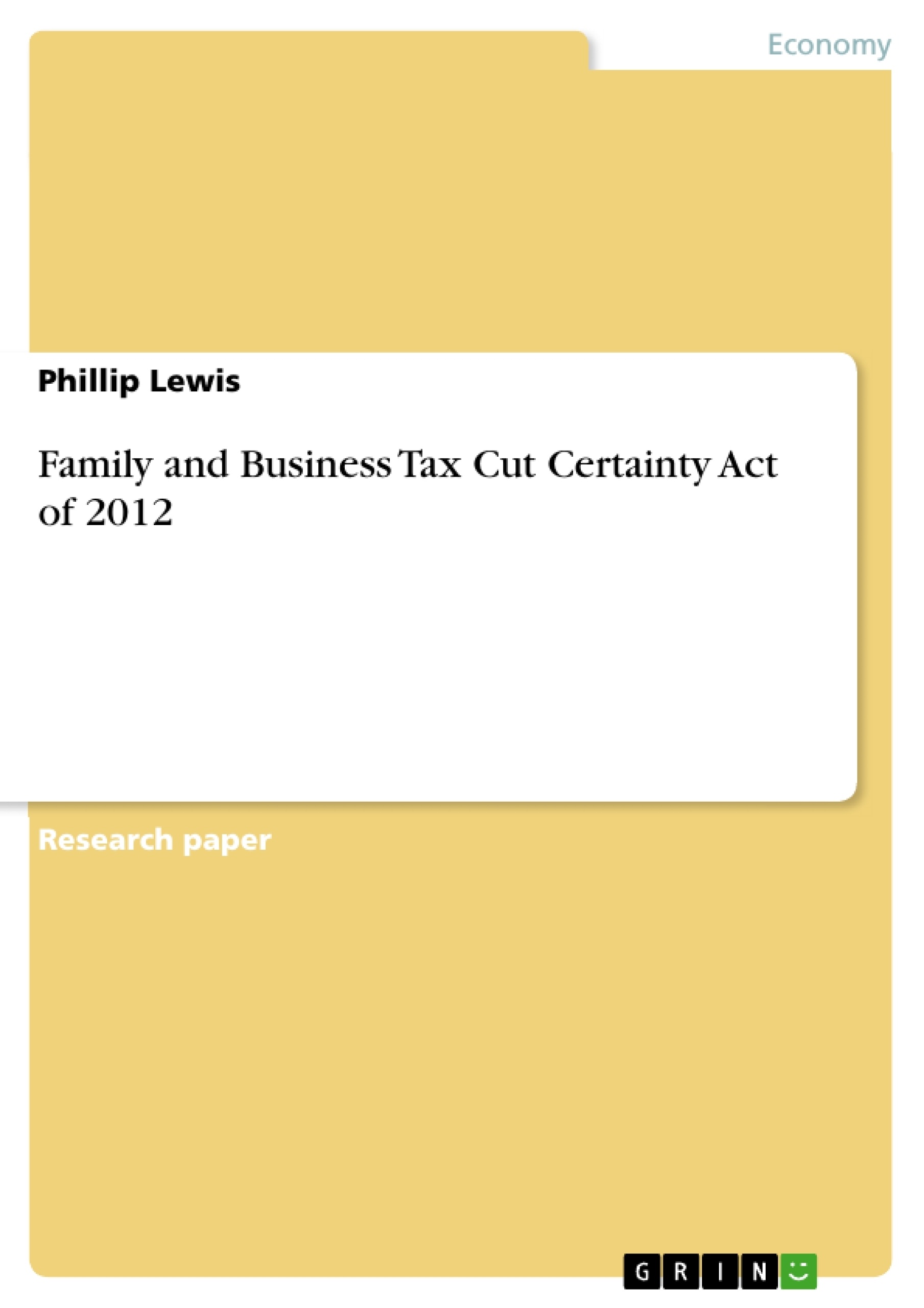An in depth analysis of proposed policy to effectively address the monetary governance and taxation in the United States. This analyse is of the Family and Business Tax Cut Certainty Act of 2012 is a critical assessment of both proponent and opponent views as well as proposals for the passing and implementation of comprehensive tax policy.
Inhaltsverzeichnis (Table of Contents)
- Economic Effects
- Background History
Zielsetzung und Themenschwerpunkte (Objectives and Key Themes)
This analysis of the Family and Business Tax Certainty Act of 2012 aims to examine the economic implications and historical context of tax cuts and their impact on the US economy. The article explores the motivations behind these tax benefits and their effectiveness in stimulating growth and job creation.
- The impact of tax cuts on economic growth and job creation
- The historical evolution of tax policies in the United States
- The debate surrounding the benefits of tax cuts for individuals, businesses, and the overall economy
- The role of tax policies in shaping economic outcomes
- The relationship between taxation, economic activity, and social welfare
Zusammenfassung der Kapitel (Chapter Summaries)
Economic Effects
This section examines the economic arguments for and against the Family and Business Tax Cut Certainty Act of 2012. It argues that while proponents believe tax cuts will stimulate economic growth and job creation, critics argue that they primarily benefit corporations and the wealthy while doing little to address the needs of the middle class and struggling families. The section also explores the potential consequences of allowing the tax cuts to expire, including the impact on families and the national debt.
Background History
This section provides a historical overview of tax policies in the United States, tracing their development from the colonial era to the present. It highlights the evolution of different tax structures and the rationale behind their implementation, emphasizing the ways in which tax policies have been used to achieve specific economic and social goals.
Schlüsselwörter (Keywords)
The primary focus of this analysis is on the Family and Business Tax Certainty Act of 2012, its economic impact, and its relationship to historical tax policies in the United States. Key themes include tax cuts, economic growth, job creation, corporate tax rates, the national debt, and the historical evolution of tax policies.
- Quote paper
- Phillip Lewis (Author), 2012, Family and Business Tax Cut Certainty Act of 2012, Munich, GRIN Verlag, https://www.grin.com/document/207773



